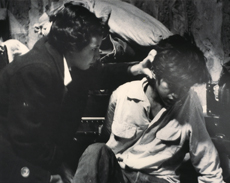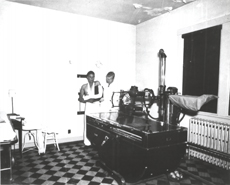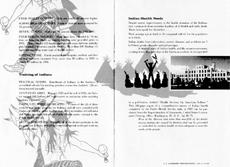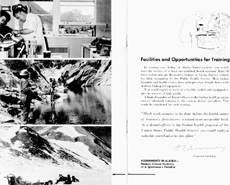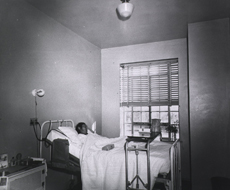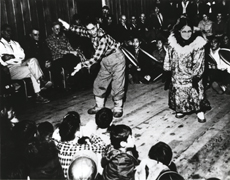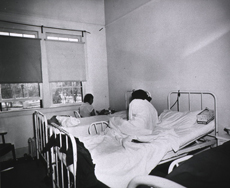Transfer to Department of Health, Education,
and Welfare (1946-1969)
On July 1, 1954, an act of Congress transferred all Native American health care programs and responsibilities from the auspices of the Department of Interior's Bureau of Indian Affairs (BIA) to the Department of Health, Education, and Welfare's Public Health Service (PHS).
From the time of the transfer, the PHS published many reports of its progress in providing improved health care to Native Americans over what the BIA had provided. Such PHS publications include pamphlets and brochures showing it to be a reliable provider of Native American health services.
Some of these were published to encourage physicians to consider government employment, working on an Indian reservation. Usually stressed were the unique challenges to be met and the recreational enjoyments of the West.
Before and following the transfer, congressional hearings continued to examine the poor quality of care provided to Native American patients at hospitals when health care was being administered by the Department of the Interior. One of these hospitals was Morningside Hospital (See also the hospital's earlier catalogs in exhibit case 4).
Exhibit Case 6
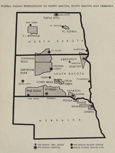
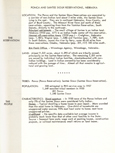
Indians on Federal Reservations in the United States: a digest, Aberdeen Area, PHS, Division of Indian Health, 1959.
Digests like this one were published as fact sheets for the PHS itself and distribution to other federal agencies.
"Adapting White Medicine to Indian Culture. If Western medicine is to help and not harm the Navajos, it must get them to accept our pertinent and practical knowledge without undermining their faith. Their faith must not be ruthlessly attacked simply because it offers some obstacles to medicine. Instead, Western medicine should be expressed to the Navajos in terms of their own culture, in ways that accord with their understanding of the world and their values. If a public health worker wins the friendship of a few Navajos and takes time to listen to them, he will learn much that will be of practical use in adapting treatments, procedures, and teachings to the Navajos. In the course of time, as rapport develops, the ceremonials which least interfere with medicine can be particularly encouraged; thus it may be that the physician is free to give penicillin and the Navajo is free to get the psychological benefit which he may derive from the religious rituals. For a Navajo patient, being helped by a "singer" is quite different from being helped by a physician or nurse.
The physicians, nurses, and other staff members who understand the Navajo's way of looking at the world and his psychological dependence on the "sings" are likely to have good relationships with the Navajo patients. Those who do not understand their ways, and attempt to force our beliefs and the scientific basis of our medicine on them, are likely to have poor relationships. Doctors at the Fort Defiance Sanatorium report that when, in recent years, they have suggested that patients have "sings" before and after sanatorium treatment, there has been less absence-without-medical-advice."
Source: Orientation to Health on the Navajo Indian Reservation: A Guide for Hospital and Public Health Workers, for the PHS Division of Indian Health, 1959, p. 18.
Hearings before Congress on the responsibility of Morningside Hospital's owners and the Department of the Interior for the poor care patients received there from 1948 to 1957. [book pages not shown in online exhibition].
"Virtually all the patients in Morningside Hospital are those committed from Alaska. Many of them are Alaskan natives, who had been transported over a thousand miles from their homes to the Morningside Hospital, and many of them have been separated for long periods of time from their family and friends."
Source: House of Representatives Committee Report on Morningside Hospital, 1958, p. 2.
To the First Americans: A Report on the Indian Health Program of the U.S. Public Health Service, 1968. The U.S. PHS began publishing these in 1967 [not shown in online exhibition].
Last Reviewed: March 5, 2024



